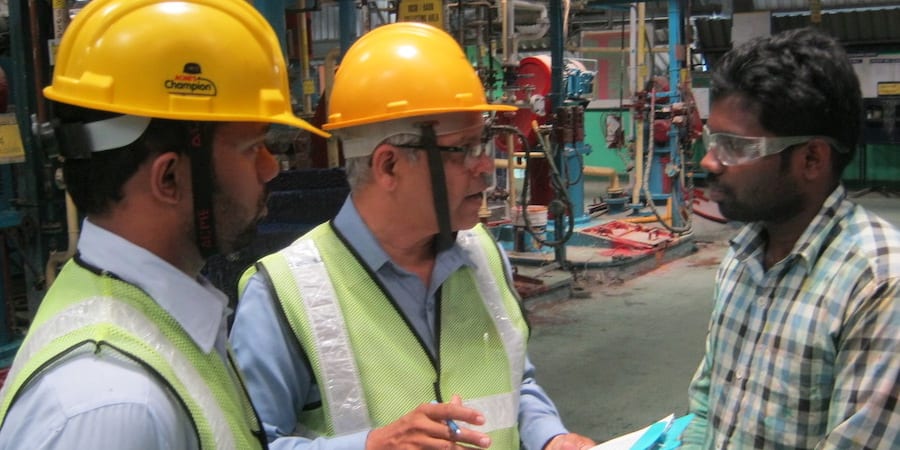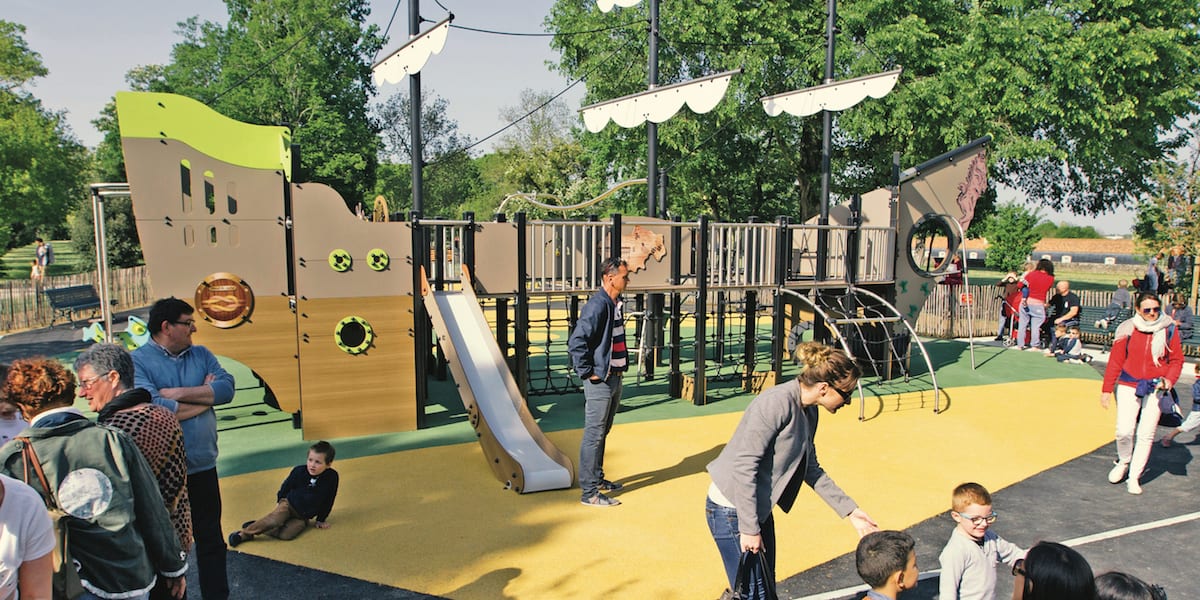
Determination pays
CASE STUDY – This Dutch company awards social benefits to the unemployed. Thanks to lean thinking, they were able to radically transform the service they offer them.
Words: Richard van Ooijen and Riegholt Hilbrands, Lean Management Instituut
People who find themselves out of work fundamentally need two things: in the short term, they need money to pay bills and survive; in the long term, a job allowing them to become fully independent members of society.
Halte Werk manages the awarding of social benefits to the unemployed and offers support to find work on behalf of three municipalities in the Netherlands. Their goal is to help people to get back on their feet and bring order back to their lives: to do this, the organization strives to remove the barriers preventing people from finding work, while issuing social benefits to them in the interim.
Around two and a half years ago, Halte Werk reached out to the Lean Management Instituut with the intention of initiating a lean transformation and improve its process. Director Irene Makelaar – who had some experience with lean thinking – saw an opportunity to tackle problems and improve the service provided by the organization. We were invited to Halte Werk with the idea of working at value stream level and provide skills to people to change their way of thinking.
We started with a week-long value stream mapping exercise to find opportunities for improvement in the process and, for each of them, we supported the team in starting an A3.
Three of the four kaizens the team decided to pursue proved successful (one turned out to be based on a wrong assumption that people who had some income but were eligible for additional benefits were able to correctly state their income as soon as they received the funds).
The first kaizen focused on the intake process. Benefits must be paid out to eligible people within 28 days of the request being approved – lest Halte Werk having to pay a higher sum up front and to recalculate the amount of the benefit later on. When we started off, it took Halte Werk anywhere between 58 and 78 days to generate the first pay-out. We set a target of 28. At first, people said it was impossible. After the kaizen event, however, they realized there was a lot of waste in the process and that the pay-out could be sent in 15 days. Today, they are doing it in 11. What a breakthrough!
The second successful kaizen tackled the long lead-time for recalculating the benefit amount in the event of a change in the beneficiary’s personal circumstances (for instance, moving in with the partner typically results in a lower amount paid out). This caused Halte Werk to pay out more than the beneficiary was entitled to and then claim the extra money back (besides the additional efforts, it turned out that often times that claim was not possible to fulfill). Before the kaizen, there were 400 such cases (costing €480,000 a year) and the lead-time for recalculation sometimes reached 60 days. After the intervention, the lead-time was reduced to 3-10 days and during the one-month pilot there were no incorrect payments.
The third improvement focused on speeding up the process of helping people to find work. Before lean, the search for a job started seven weeks after the request for benefits was approved and was only optional (at the discretion of the professional handling the case). We suggested the team initiate the search of a job right away, concurrently with the process to assess whether the client is entitled to benefits. The results were very positive: before lean, 55% of the beneficiaries found a job within six months, whereas after our kaizen 70% found one within three.

From an operational management standpoint, we introduced daily stand-up meetings in the teams to sustain improvements and identify new opportunities. At the same time, we provided introductory training on the lean basics to all Halte Werk employees to enable them to improve their own work and to participate in improvement projects. We used the train-the-trainer approach with a number of team leaders and coordinators. According to Richard Spaans, one of the coordinators, this helped them to see problems in a different light and made it possible to solve them in a structured way.
Another big change entailed moving from team meetings that took over an hour to weekly reviews focused on customer outcomes. Of course, there was some resistance to the changes, but Richard found that creating KPIs to follow together with the team members helped to win people over. (How can we measure how good we are in what we want to achieve?)
What also helped was the introduction of a skills matrix to ensure all the different jobs could be done while enabling employees to work in the areas in which they excelled. People were used to everyone performing all kinds of tasks, even when they really disliked it or didn’t have much experience with it. Individual performance targets were changed to team targets. “Let’s do this together!” became the motto, and it was great to see what people could achieve in this way.
Carolijn Spaan, coordinator in a different team, recognizes how challenging it was to get a weekly standup going. Within the team they experimented with different KPIs, but it wasn’t until they started tackling on one that was measurable, actionable and important to both management and employees that the meetings truly became a success. The employees really became active during the meetings and started to work to reach the agreed target. Week after week, the team saw improvement, which made them more enthusiastic about this new approach that helped them to improve even further.
Carolijn mentions the importance of a rotating chairmanship of the weekly standups. This required reaching an agreement on what was expected of the person leading the meeting. This got everybody involved in an active way, whereas at first it was something that the coordinators did.
Now that there is active engagement of the team members, Carolijn sees new opportunities to improve even further. The use of a skills matrix to help team members to work on their strengths is something she is currently discussing.
In Richard’s team all members have an agreed-upon maximum caseload. If one of the colleagues has a caseload exceeding his or her maximum capacity, it is a team effort to redistribute the work so that everyone is below their personal maximum caseload. This way, everyone in the team has a chance to improve the team performance and improve the service as it is experienced by customers.
Richard and Carolijn both stress the importance of making KPIs, skills matrices and other such tools a team effort, to ensure all employees see the problems first hand and discuss and solve them together. It is clear for everyone that problems are really addressed in the weekly standups and which actions are taken by whom to solve them. This has helped to improve both quality and response time.
LEADERSHIP ENGAGEMENT
It took around three months to implement the changes and fully realize the A3s. At first, people in other parts of the business found it difficult to understand how to translate the examples they had seen into something they could use in their daily work. They were reluctant. It was only when they started to see that lean was making their job easier that they started to change their minds. Easing these growing pains and making people aware of how lean could help them was our focus on the second year we spent with Halte Werk.
At the same time, managers gradually realized they had to change their behavior and that it was up to them to drive the process improvement. Seeing senior leaders work on their own A3s was the first sign that the cultural transformation of Halte Werk was taking place.
Department head Yvonne Buwalda, for example, ran a project to help beneficiaries who had (at least ostensibly) stopped trying to find work – that big group of people who showed no sign of activity to find work – and ran a project around that. A project group was formed with the employees involved and together they followed the A3 process, meeting every other week for six months to discuss progress, learn from their experiences and decide next steps.
They found that some of the people struggling to find work showed no sign of activity. Of the 1,500 beneficiaries Halte Werk served, 48% were not engaged in any activity aimed at finding employment. Out of these, Yvonne and her group got almost 50% to work and more than 20% to an activity (so, in total, 70% found a job or set things in motion to find one).
The more effective way of working discovered by the project group has now been accepted as the new standard by all employees. The enthusiasm of both the members of the project group and the other employees was inspiring to Yvonne. The standard has been improved even further and the employees asked to tackle future challenges in the same manner – creating an A3 with a project group.
Another A3 – by Irene (the Director) – tackled the complaints that Halte Werk’s Work Council had received about the level of the workload for the employees of the organization. Director and employees (including Work Council members) worked together on this A3. The first step was to properly define the problem: was everyone experiencing workload-related stress? We managed to make the problem visible by focusing on the functions and people that experienced stress most of the time. Then, we listed the different things that these people said were adding to their workload and identified a number of sticky points: for instance, having to go through 17 windows on their computer screens to reach a letter they had written and had to attach to a document. Needless to say, this was a big waste of time (not to mention tremendously annoying). Once identified, these wastes proved to be quite easy to eliminate. Besides the improvements in the way work was done, we found that some jobs caused stress to some people, but not to others. For example, calculating corrections on benefits received was a task some employees dreaded and often put off. Through a quick survey we found that there were enough colleagues that didn’t mind this task and were quick at completing it. A schedule was made so that it was clear for everyone who was willing to help you out if you had to perform this task and found it stressful. While the original problem was vague and abstract, simple measures like these (aimed at tackling concrete issues) allowed us to gradually chip at it. This improved employee satisfaction and encouraged people to buy into lean thinking.

Irene also worked on an A3 focused on “activating” people who are not expected to be able to provide for themselves. Within this category of clients, she focused on those who had been on benefits for four years or more. This is most challenging demographic Halte Werk works with: figures show that, on average, if you are on benefits for four years you will be for up to thirteen. The team radically changed the way this problem was approached: first, they began to touch base with benefit recipients at least once a month (a far cry from the previous once-a-year phone call from social services). Secondly, they started to ask people what they needed from Halte Werk, as opposed to telling them what to do. Focusing on what the customer needs instead of the execution of the different tasks paid off in this setting as well: out of the 48 people involved in the pilot, 5 found work so that they could generate income and two more found part-time jobs (thus only needing partial and not full benefits). Overall, the new way of working piloted in the project successfully activated 50% of the people involved to take concrete steps to improve their chances of finding work or participating in society in other ways (like voluntary work). A huge success as the target of 12,5% was initially deemed as “too ambitious” by many for this specific client group.
We can’t stress enough the positive effects the lean journey had on the client satisfaction rate, which in the past two years has improved from 7.1 to 7.8. This, combined with the improvements reported in KPIs, proves the application of lean thinking is beneficial for all parties involved.
REFLECTIONS
Leadership involvement was critical, but what allowed lean thinking to truly take roots at Halte Werk was really the determination the team showed in the face of obstacles and difficulties. There were many hurdles along the way and the behaviorial changes required were drastic, but they really wanted it and that’s why they were able to make it happen. In lean, determination pays.
When we started with our week-long kaizen event, people were unconvinced. Even their body language showed how closed they were to the idea of “another initiative”. Interestingly, a few months later, those who had complained the most became the staunchest supporters of the lean transformation, proudly presenting their future state to management. Not only had they seen their managers lead by example and personally commit to making change a reality; they had also engaged in the lean experiments themselves, eventually experiencing the beneficial effects first hard.
John Shook, the Chairman of Lean Global Network, once said it is easier to act your way into a new way of thinking than think your way into a new way of acting. In our mind, Halte Werk’s story is a perfect example of this.
THE AUTHORS


Read more


FEATURE – When they realized their lean efforts had overlooked the crucial aspect of management behavior, AkzoNobel senior leaders turned to a great lean book for help with leadership development.


FEATURE – Enabling its people to think autonomously about problems and fostering collaboration among departments is allowing a French company that makes and installs playgrounds to thrive.


ONE QUESTION, FIVE ANSWERS – With this month’s question we try to understand what lean idea or principle our interviewees would have liked to learn sooner or better in their journey. So, heads up… You might be in a similar situation.


FEATURE – This student’s research confirms that lean efforts stall when culture lags. Case evidence shows fear, poor communication and top-down tools breed resistance, but participatory leadership fosters resilient lasting outcomes.

